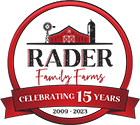MEET THE LOCALS
Goats
 We have at least a couple dozen young goats on the farm, representing four breeds: Nigerian Dwarf, Nubian Toggenburgs and Boers. Purchase a cup of goat food and watch them get excited to see you!
We have at least a couple dozen young goats on the farm, representing four breeds: Nigerian Dwarf, Nubian Toggenburgs and Boers. Purchase a cup of goat food and watch them get excited to see you!
Donkeys

MILLIE was pregnant for about a year before MARINE was born Sept. 16, 2023. The newborn weighed about 25 pounds and stood and walked within about an hour.
Horses

CHAIA (left) is an Arabian horse. Chaia (pronounced KY-a) is intelligent and sensitive and loves attention. She is 18 years old and is very loyal so long as she is treated with respect. LITTLE BIT (right) is a 16-year-old Hackney pony. Little Bit is friendly, brave and always alert. Hackney ponies are adaptable and tough.
Chickens

There may be 25 billion chickens in the world, but we still think ours are pretty special. The neck and backbone of a chicken consists of 39 bones — more than a giraffe! Because of that, chickens can turn their head 180 degrees.
Baby chicks

Baby chicks can go 72 hours without food or water after they hatch. But they grow fast! From the start of our fall season to the end the change is fun to watch.
Cattle

Don’t think there’s such a thing as a cute cow? Then you haven’t met PUNKIN. She was born April 8, 2023, and is a micro High-Park calf. A High-Park is a cross between a Scottish Highland (long ginger hair) and a White Park (a British breed, usually with white hair). When fully grown she will be only about 36 inches tall and about 300 pounds.

RUBY is a Black Angus cow who gave birth to Opal on May 27. Ruby herself was born April 1, 2021.

MELVIN is a purebred Holstein bull cow. He was born in March. A Holstein can produce about nine gallons of milk a day.
Sheep

RIVI and her buddy ROY were born in February (different moms).
Turkeys

We have two turkeys: a Bronze and a Norfolk Black. Bronze turkeys are believed to be a cross between wild U.S. turkeys and imported British turkeys. Norfolk black turkeys are believed to be the oldest domesticated turkey breed.
History of the American barn

Who doesn’t enjoy catching sight of an American red barn as they drive down the road?
The farmer’s barn had to be built wisely because invariably it housed his greatest assets. The agricultural building was more important than his own house. Without a way to protect farm animals or crops, early settlers had few ways to survive.
Barns were about common sense, usefulness and economics, not style.
Every new barn, therefore, was a “new and improved” version compared with past efforts — not only in construction materials and techniques, but also in orientation to the sun and prevailing winds, as well as in accessibility and general efficiency.
There were no blueprints for barns. The builder often brought knowledge from his home country and also gained knowledge from neighboring barns. The characteristic looks that we associate with barns are the result of this natural evolution.
Early farmers didn’t paint their barns at all. Why waste money on paint? But by the late 1700s, farmers began looking for a way to protect their wood barns from the elements. It was a functional need, not a decision based upon aesthetics.
Farmers made their own paint, usually with a mix of skim milk, lime, and red iron oxide earth pigments, which had a red tint. This created a plastic-like coating that hardened quickly and lasted for years. Linseed oil was subsequently added to the recipe to provide the necessary soaking quality.
Mixing the oxide into the paint protected the wood from mold and moss (which caused decay) and also resulted in a deep red color. Darker colors also absorb more of the sun’s rays and kept buildings warmer in the wintertime. Thus, the American “barn red” was born.
